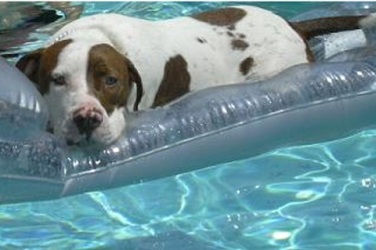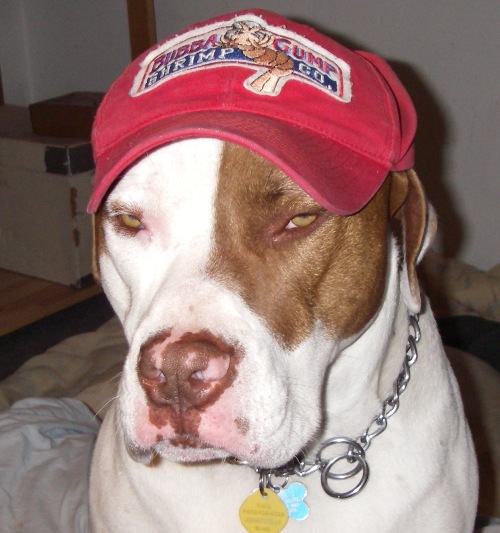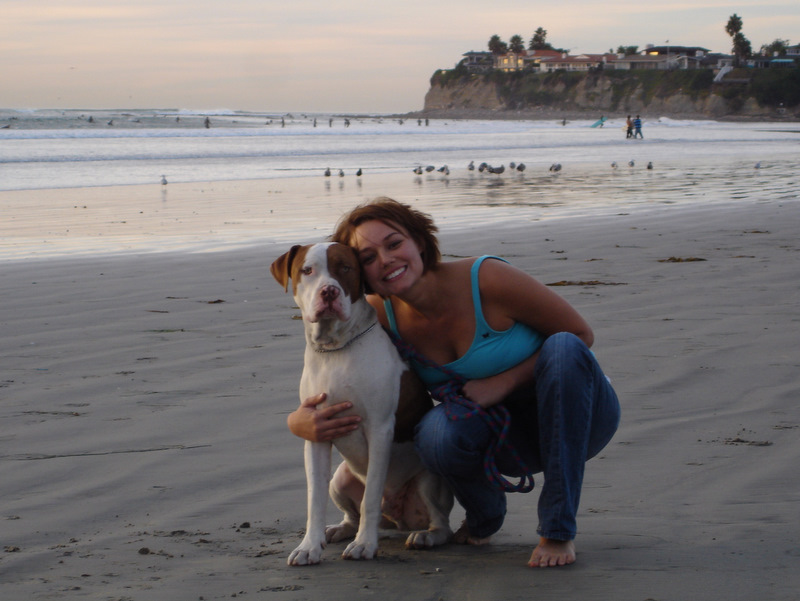In the summer of 2007 my, then 2 year old, American Bulldog began showing some signs of intermittent discomfort and lameness in his rear leg. We did not worry about it too much at first, as he is a crazy jumping bean of a dog that likes to play rough and run wild in the backyard. We chalked it up to a pulled or strained muscle and figured he would be good as new again in a week or so. Keeping a very close eye on him during the next week, we started to notice that the nails on his rear leg were wearing differently than his other nails, and the two middle nails were almost completely filed down.
The filing of the nails and lameness after exercise prompted us to make an appointment with our vet. Tucker had x-rays of his hips and legs, drawer sign testing, blood work and some simple neurological tests to determine the cause of his symptoms. After ruling out hip dysplasia and neurological causes, we were referred to an orthopedic specialist within the same veterinary clinic. We were told by this veterinarian that Tucker most likely had a cranial cruciate ligament tear (although – as we later found out – it is not possible to diagnose a CCL tear from x-rays), and surgical repair was immediately suggested.
My husband and I were not comfortable with the idea of surgery at first, especially since all of this was being sprung on us within a 10 minute meeting with a veterinary surgeon we had never met before. We spent a few months doing Conservative Management, using different anti inflammatory medications along with reduced movement and the use of a brace. We did monthly rechecks with the surgical specialist to check what progress Tucker was making in his recovery. Ultimately, Tucker started to develop arthritic tissue in the knee and his condition deteriorated despite our best efforts to make CM work.
About 6 months after the original onset of his symptoms, we opted to have Tucker’s stifle (knee) repaired using the Traditional Repair Surgery, also known as the extracapsular repair technique, against the advice of our veterinarian. We came to this decision after months of research, and we personally felt that the risks and rewards for this procedure greatly outweighed those associated with our other choices (TPLO and TTA), or no surgical intervention at all. The recovery process was long and arduous, and not without complications.
Tucker developed a staph-type skin infection under his cast which caused him a lot of discomfort, and caused him to subsequently lose all of the hair on his leg. Tucker has since healed from his traditional repair, and while we are not 100% ecstatic with the results, we do feel that he has more stability in the knee now then he did prior to surgery.
In late 2009, Tucker started to show signs of a CCL tear in his right leg. This tear appeared in much the same way as the first, with lameness after exercise and an unwillingness to use the injured leg. We also noticed the same pattern of the nails being filed down.
After having the suspected diagnosis confirmed by a veterinarian, we opted again to start with Conservative Management. With much effort, attention and patience, we have successfully been able to “heal” Tucker’s second cruciate ligament tear using only conservative techniques. While we began with a prescription anti-inflammatory medication, we were able to transition into a more natural and holistic approach using Yucca and supplements. I must also credit weight loss, weight maintenance and the incorporation of daily exercise as reasons why Conservative Management worked this time around.
I created Dog Knee Injury to serve as a resource for dog owners faced with cranial cruciate ligament injuries. On this website I offer my personal accounts (which should in no circumstances be substituted for medical advice from a veterinary professional), and present relevant medical information relating to diagnosis, treatment, repair and recovery from CCL tears and ruptures. Everyone has to make their own personal decision as to what path is the right one for them to take with their dog. It is my hope that the information on this site both contributed by myself and our wonderfully generous contributors can help you choose a treatment plan that will work the best with your lifestyle and financial situation.
I encourage others to share their stories by commenting on the articles featured on the site, or by emailing me directly. If there is any content you would like to see added to the site, or you would like to share your story, please email me at dogkneeinjury@gmail.com or use the form on the Contact page. Your feedback is always welcomed and appreciated.
Happy Tails,
Mandie and Tucker



